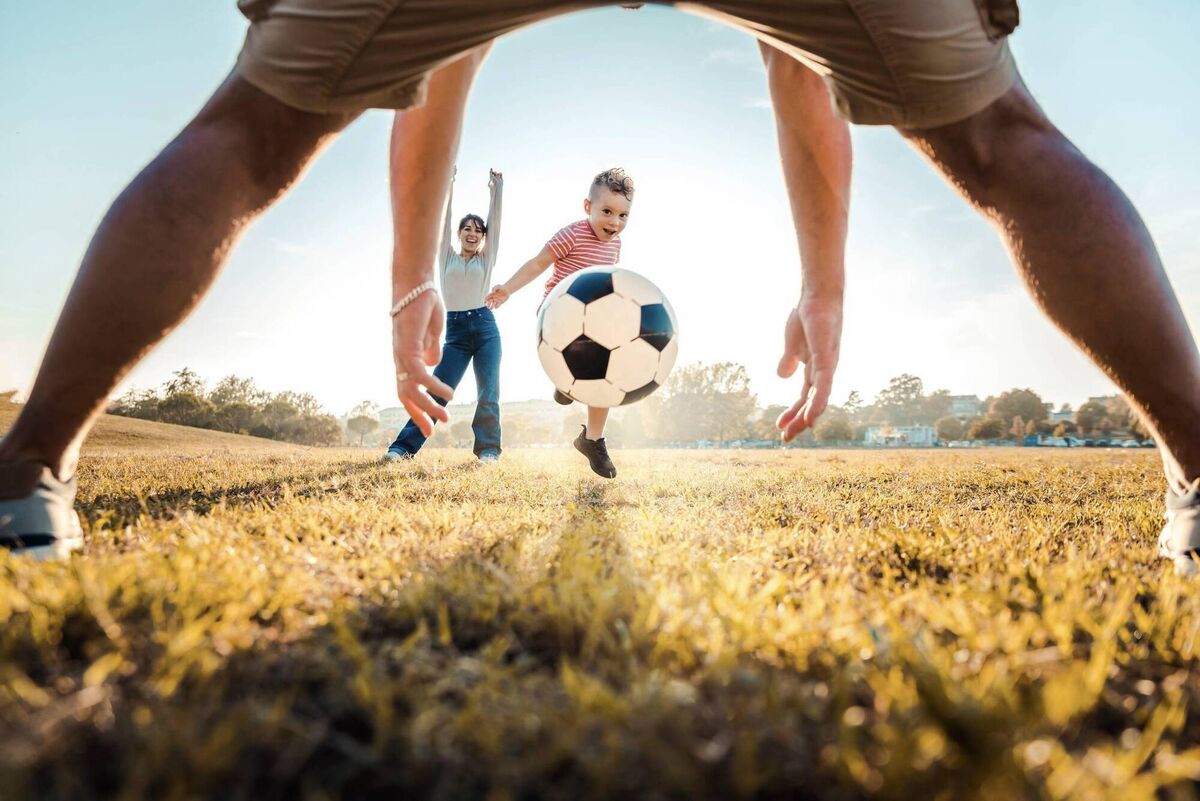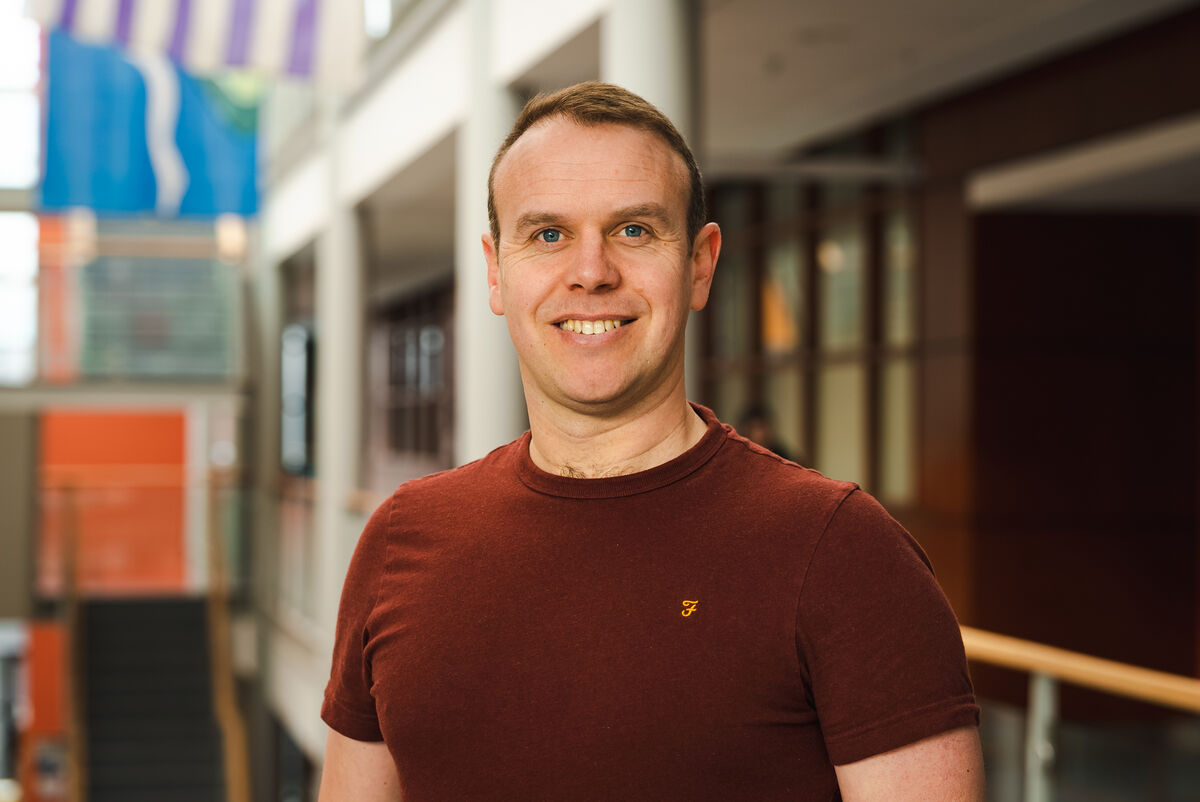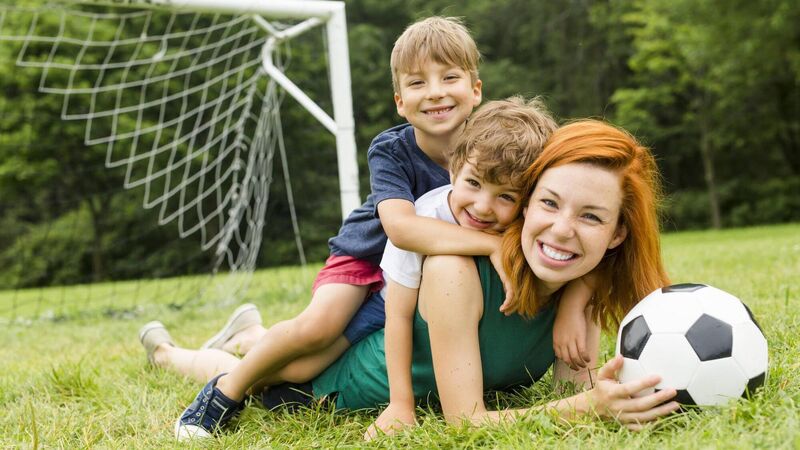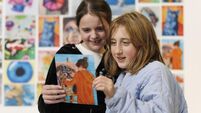When it comes to why young people participate in sport, parents are important.
‘Because of my father’ was cited as one of the top reasons for sports participation among post-primary students in the Children’s Sport Participation and Physical Activity (CSPPA) Study 2022 ( exa.mn/participation).
‘Because of my mother’ was also a motivating factor among the almost 9,000 10- to 19-year-olds surveyed across the island of Ireland.
“Boys were more likely to say ‘because of my father’ — 10% of boys versus 5% of girls — and girls more likely to say ‘because of my mother’,” says Sport Ireland director of research and innovation Benny Cullen.
“It shows that gender-specific roles in leading by example are very important. Active parents are much more likely to have active children.”
The CSPPA study authors find it encouraging that the number of children in the Republic of Ireland meeting WHO guidelines of 60 minutes daily moderate-to-vigorous physical activity has increased since 2018 — back then it was 13%. But while the 2022 figure is higher at 15%, they say it is still “unacceptably low”.
“Moderate activity is not running a marathon. It’s not an uphill sprint,” says Stephen Behan, assistant professor at DCU’s School of Health and Human Performance. He sees parents’ role as paramount in encouraging children to be active.
There’s a misconception among parents as to how active their children are. They may not be getting as much activity at school as parents think.”
Like Cullen, he says children are more likely to be active if their parents are — and they enjoy being active with their parents. He recommends using the ongoing school holidays to walk, cycle, and go to the park or playground.
“This kind of engagement is what children want. Find some middle ground — if you like to walk and your child likes to cycle, do a bit of both. Maybe the walk can be to the playground, or somewhere you’d both like to go.”
But while children’s physical activity guidelines may not demand sprinting up a steep slope or running a marathon, they do still mean “anything beyond a nice brisk walk”, says Cullen.

Parental support for physical activity is vital, he says, pointing to a top reason cited by post-primary students for stopping sport: "It takes up too much time."
“Parents can help children balance the workload of school through developing a good routine. Particularly teen girls, who spend almost twice as long as boys doing homework and are more likely to say they haven’t enough time for sport.”
But parents need to examine their relationship with physical activity in order to support their children to be active, says Dr Rachel Flanagan, senior counselling psychologist with the Child and Adolescent Obesity Management Service at Children’s Health Ireland (CHI), Temple Street.
“Can that relationship be improved,” Flanagan asks.
“Is it [physical activity] something you enjoy? Children tend to learn more from our actions than our words. Seeing you genuinely enjoy doing physical activity, or even noticing how you feel afterwards, can inspire the young person looking up to you.”
She urges parents to watch how they talk about sport and exercise.
“Avoid labelling and stereotyping. Children tend to move into others’ expectations of them. If a child is told they’re not sporty early on, this doesn’t leave much room for building on any skills they do have in that area.
"It also sends a message of not belonging in a particular category — which could influence how much they put themselves into those situations as they grow up. Instead, send the message that finding something enjoyable and fun is more important than ‘being good’ at it.”
Nor should parents frame physical activity as something punitive. “It’s not helpful to see physical activity as something we do to ‘offset’ food intake — or something we must do to ‘earn’ food. Thinking [like this] can lead to an unhealthy relationship with both exercise and nutrition,” cautions Flanagan.
She instead recommends conveying to children that physical activity benefits health in and of itself.
“Hopefully it can be something enjoyable, where we notice its positive impact on how we feel, especially if we’re consistent with it.”
Show compassion to encourage
If children are reluctant to be active, be curious about what the barriers are — and try not to assume anything, Flanagan advises.
“Some may struggle with coordination and [so] avoid certain sports. Some may experience judgement or comments from others. Children with disabilities may feel excluded from games or activities their peers are [doing]. Children with body image concerns or low self-esteem may need support around engaging in PE.”
It is best to meet a child, struggling with physical activity, where they are at. “Showing compassion for how they’re feeling is a good place to start — before collaborating with them on what the best next step might be,” says Flanagan, who recommends working with children’s activity interests.
“Some will love sports, others won’t — that’s OK. And it’s great to feel motivated, but neither adults nor children can always rely on this. It’s more helpful to focus on how the family can build activity into their day-to-day life so it becomes the norm. Scavenger hunts, outdoor games — simply bringing indoor activities to the outdoors can instantly make children more physically active.
Avoid all-or-nothing approaches to exercise. Set small achievable goals — if some weeks are better than others, that’s part of life.”
Cullen says it is important for teens to feel a sense of competence and mastery.
Parents would do well, he says, “to celebrate their children’s achievements, to recognise their personal development, regardless of field of play, or results they might get”.
Among post-primary students surveyed for the CSPPA study, keeping fit was their number one reason for sports participation. “The message that sport and exercise is good for them is percolating down to teenagers,” says Cullen. This is great because the benefits of being active last a lifetime and, says Cullen, one of the best gifts we can give our children is to encourage them to be active.
Benefits to developing bodies
Lucinda Case, clinical specialist physiotherapist in Child and Adolescent Weight Management at CHI, Temple Street, sees the benefits firsthand.
“Increasing children’s physical activity really helps improve muscle strength, endurance, and balance. It benefits their cardiovascular system, regulating blood pressure and improving heart and lung fitness.
“It improves flexibility — really important in growing children because as they grow it’s common for muscles to get tight, which can cause pain and put them at risk of injury. Exercise is important for bone health and strength, for reducing risk of fractures, and for sleep patterns. It’s really very important for their overall growth and development.”

The Child and Adolescent Weight Management Clinic sees about 250 children annually. Aged from two to 16, they’re referred because of obesity-related health complications.
“I see children who have pain and whose balance is affected. I see younger children with delayed gross motor skills,” says Case.
“In older children, I see higher blood pressure than would be normal for their age.”
Once patients’ activity levels increase, Case sees “loads of positive effects” over a year of monitoring.
Behan says “active children make active teens make active adults”.
He’s passionate about encouraging physical activity in children from a young age, pointing to its protective role in the transition to adulthood.
“Being active decreases chances of getting a lot of non-communicable diseases in adulthood," he says.
In 2021, Sport Ireland-commissioned research on ‘The Value of Sport in Ireland’ ( exa.mn/valueofsport) which found a 35% risk reduction in coronary heart disease/stroke; 20% in breast and colon cancers; 40% risk reduction in diabetes; 52% in hip fractures; 25% in back pain, and 30% risk reduction in depression.
Cullen says upping children’s activity levels is about improving physical literacy, which spans three domains: “Physical competence to do the sport. The affective domain — do children enjoy, love it, feel connected to a community, valued for who they are? And the cognitive domain — they understand the importance of physical activity.”
Children with high physical literacy will most likely achieve what Case describes as the ideal scenario. “We want to teach children to be consistently active, to form a habit, so we’re not constantly pushing them to do it.”
Sport Ireland resources
www.getirelandactive.ie Find range of activities in your local area; over 10,000 sports clubs/facilities.
www.hermoves.ie Resources/advice/activities for teen girls/their parents.
www.sportireland.ie/winter-initiative Ideas/programmes for keeping active during winter.
CONNECT WITH US TODAY
Be the first to know the latest news and updates








